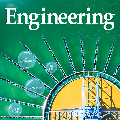This year marks the eightieth anniversary of the invention of the finite element method (FEM). FEM has become the computational workhorse for engineering design analysis and scientific modeling of a wide range of physical processes, including material and structural mechanics, fluid flow and heat conduction, various biological processes for medical diagnosis and surgery planning, electromagnetics and semi-conductor circuit and chip design and analysis, additive manufacturing, i.e. virtually every conceivable problem that can be described by partial differential equations (PDEs). FEM has fundamentally revolutionized the way we do scientific modeling and engineering design, ranging from automobiles, aircraft, marine structures, bridges, highways, and high-rise buildings. Associated with the development of finite element methods has been the concurrent development of an engineering science discipline called computational mechanics, or computational science and engineering. In this paper, we present a historical perspective on the developments of finite element methods mainly focusing on its applications and related developments in solid and structural mechanics, with limited discussions to other fields in which it has made significant impact, such as fluid mechanics, heat transfer, and fluid-structure interaction. To have a complete storyline, we divide the development of the finite element method into four time periods: I. (1941-1965) Early years of FEM; II. (1966-1991) Golden age of FEM; III. (1992-2017) Large scale, industrial applications of FEM and development of material modeling, and IV (2018-) the state-of-the-art FEM technology for the current and future eras of FEM research. Note that this paper may not strictly follow the chronological order of FEM developments, because often time these developments were interwoven across different time periods.
翻译:今年是有限元素法发明八十周年纪念。FEM已经成为工程设计分析和科学模型制作的计算工作马,包括材料和结构机械、流体流和热导、医学诊断和手术规划的各种生物过程、电磁和半导体电路和芯片设计与分析、添加制造,即几乎每个可想象的问题都可以用部分差异方程式来描述。FEM从根本上改变了我们从汽车、飞机、海洋结构、桥梁、高速公路和高层建筑等一系列物理过程进行科学建模和科学模型设计的方式。与开发有限元素方法相关的是同时开发称为计算机械和外科手术规划、电磁和半导电路及芯片设计和分析的各种生物过程。在本文件中,我们从历史角度看待有限元素方法的发展,主要侧重于其应用以及固体和结构模型力学的相关发展。FEM在其他一些领域,例如流力机械、热传输、以及流体结构相互作用等严格意义上的科学模型设计方式。FEM在1991年的早期阶段发展(19-EM),这一阶段的硬质方法在F-1965年时期发展。




